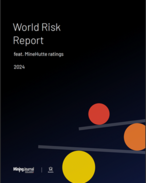This article is 18 years old. Images might not display.
One of the key problems caused by the fire was that it burnt through the communications infrastructure running along the decline and blacked out the mine's underground communications.
However, underground communications backup systems are problematic to implement because by their very nature: they have to be independent of all other systems.
But there are options.
Mike Richardson, account manager at two-way communications specialist Icom, said that the best option was to have a completely separate and independent backup system to take over if the main feeder system fails.
"You're relying on that cable to get your information between everybody," he said.
"You could think of putting in backup power supplies, like batteries, to keep the repeaters running."
Hunter Valley Mines Rescue Station training coordinator Lindsay McCreadie said the problems were even greater for underground coal mines because coal posed a particular problem for radio communications.
"A typical CB radio that you use on the surface — like truckies — is really ineffective underground because the coal absorbs the radio waves really well. What you have to do is run an aerial system out
into the mine, which is basically a single core copper cable which was taken around strategic areas of the mine — mainly down your transport roads."
"When you wanted to talk, you'd just move towards the aerial wire and you'd get communications back out [of the mine]," McCreadie said.
"That wasn't a bad system because the power was on the surface. So if you lost your underground power, you still had your surface power and your radio system would still work, because your [handheld] radios were battery operated."
"But certain places you go — it could be the geology, it could be the water in the strata — the signal might be better in some places than others. But once the experts get into it and start tuning it, you can get pretty good communications around the mine."
But this system relies on a physical aspect — the aerial — which in the event of an emergency could be damaged and therefore make communications impossible.
Stuart Munn, managing director of the Australian arm of Mine Radio Systems, agreed, saying the options were limited when it came to independent communication systems.
"There are different systems available, like trapped miner locators. They've been developed by the CSIR [Council for Scientific and Industrial Research] over in Africa," Munn said.
"It's basically a transducer that [the miners wear on their] mining belt. Should anything untoward like Beaconsfield happen, you can take a direction finder down that will actually locate the miners."
While there is no technology available for two-way communication through rock, Munn said a stronger emphasis had been placed on technologies for locating people underground, rather than speaking
with them.
Not surprisingly, he said this type of advanced emergency communications technology was being more strongly anticipated in markets where the safety record is less than glowing.
"It's the higher-risk markets like Russia and China which are looking towards it more," Munn said.
"But Africa is probably the driving force in locating systems. The occurrence of accidents there is somewhat higher than it is here."
A variation of the transducer Munn mentioned is the Personal Emergency Device (PED) system, a now widely used product of mining communications company Mine Site Technologies (MST).
MST said the system was originally developed to provide a fast and reliable method of informing underground miners of emergency situations, but due to the system enhancements and the inherent ability to readily contact personnel wherever they were underground, PED has also come to stand for Productivity Enhancement Device.
It utilises a combination of ultra low frequency and a high power transmission that enables the PED signal to propagate through several hundred of metres of rock. MST said the signal could therefore be received at any location throughout the mine via an antenna on the surface or a small underground antenna.
McCreadie said areas in the mine could still be found where the PEDs do not work properly — "but you can drive around Sydney and find a black spot with a mobile phone"
He said another disadvantage of PEDs was that they could only receive messages and not transmit them.
"With PEDs, you actually embed an aerial into a grid on the surface of the mine, and that allows the message to go underground," he said.
"There's another system they use called DACs [direct audio communication]. It's an intercom system that works up and down the belt systems and on some of the units they have underground. Once again,
it's a physical wire system — fire could actually destroy it or cause it to lose power."
McCreadie said some DAC systems had battery backups that would give an extra couple of hours.
"But when we have a fire or explosion underground, we tend to make a good job of it. We don't usually muck around. So [for the safest possible underground communications] you're really looking for something that's independent of infrastructure, and that'd be a radio system."
MST business development manager Denis Kent said the main advantage of the PED system was that its antenna was on the surface, and although this only allowed oneway communication, it was still
advantageous in that it was less susceptible to damage than other systems, which had cables that needed to be in the "line-of-sight" of the handheld device.
Kent said MST was working with the CSIRO to develop a two-way PED system and, in the US, research into a more advanced PED system was spurred on by the Sago coal mine explosion, in West Virginia on January 2, which resulted in the deaths of 12 miners.
"I spent most of February and March over there because our equipment was waved around in front of the senate hearings, explaining what it can and can't do," Kent said.
He said some companies had halted their orders for new communications systems to ensure their equipment will comply with new legislation, sparked by the Sago disaster, when the legislation is passed.
This story was first published in Australia's Mining Monthly























